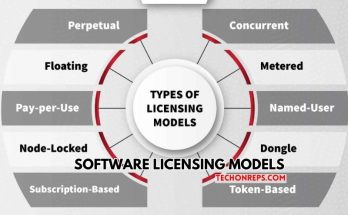Revolutionize Your A Guide to Digital Experience Monitoring Tools
In today’s digital age, monitoring tools have become essential for businesses and individuals alike. These tools allow us to track and analyze various aspects of our online presence, helping us make informed decisions and improve our digital experiences. Whether it’s monitoring website performance, analyzing user behavior, or ensuring the security of our online assets, monitoring tools play a crucial role in optimizing our digital presence.
In this article, we will explore some of the top monitoring tools available and how they can revolutionize your digital experience. From website performance monitoring to brand reputation management, email marketing monitoring to A/B testing, we will cover a wide range of tools and techniques that can help you enhance your online presence.

Top Monitoring Tools for Website Performance
Website performance is a critical factor in providing a seamless user experience and driving conversions. Slow-loading pages and frequent downtime can lead to frustrated users and lost opportunities. This is where website performance monitoring tools come in.
Pingdom is one of the top website performance monitoring tools available. It allows you to monitor your website’s uptime, page speed, and transaction performance. With real-time alerts and detailed reports, Pingdom helps you identify and resolve performance issues quickly.
Another popular tool is GTmetrix, which provides comprehensive insights into your website’s performance. It analyzes your site’s speed and provides recommendations for improvement. GTmetrix also offers historical data, allowing you to track your website’s performance over time.
How to Use Google Analytics to Improve Your Digital Experience
Google Analytics is a powerful tool that provides valuable insights into your website’s performance and user behavior. By tracking metrics such as page views, bounce rate, and conversion rate, you can gain a deeper understanding of how users interact with your site.
To make the most of Google Analytics, start by setting up goals and funnels. This will allow you to track specific actions that users take on your website, such as completing a purchase or filling out a contact form. By analyzing the data from these goals, you can identify areas for improvement and optimize your website accordingly.
Another useful feature of Google Analytics is the Behavior Flow report. This report visualizes the path that users take on your website, showing you where they enter, where they exit, and the pages they visit in between. By analyzing this data, you can identify any bottlenecks or areas where users are dropping off, and take steps to improve the user experience.
The Benefits of Using Social Media Monitoring Tools
Social media has become an integral part of our digital lives, and monitoring tools can help us effectively manage our social media presence. Social media monitoring involves tracking mentions of your brand, monitoring conversations, and analyzing sentiment to gauge public opinion.
Hootsuite is one of the leading social media monitoring tools available. It allows you to manage multiple social media accounts from a single dashboard, schedule posts in advance, and monitor keywords and hashtags. Hootsuite also provides analytics and reports to help you measure the impact of your social media efforts.
Another popular tool is Sprout Social, which offers a range of features for social media monitoring and management. It allows you to monitor brand mentions, engage with your audience, and track the performance of your social media campaigns. Sprout Social also provides in-depth analytics and reporting to help you measure the success of your social media efforts.
How to Monitor Your Brand Reputation Online
Brand reputation is crucial for businesses, as it directly impacts customer trust and loyalty. Monitoring your brand’s online reputation allows you to stay on top of what people are saying about your brand and address any negative feedback or complaints promptly.
One way to monitor your brand reputation is by using Google Alerts. This free tool allows you to set up alerts for specific keywords or phrases related to your brand. Whenever these keywords are mentioned online, you will receive an email notification, allowing you to respond or take action as needed.
Social media monitoring tools, such as Hootsuite and Sprout Social, can also be used to monitor your brand’s reputation. These tools allow you to track mentions of your brand on social media platforms, monitor sentiment, and engage with your audience. By actively monitoring and responding to mentions of your brand, you can build a positive online reputation and address any issues before they escalate.
The Importance of Email Marketing Monitoring
Email marketing is a powerful tool for businesses to connect with their audience and drive conversions. However, it’s essential to monitor the performance of your email marketing campaigns to ensure they are effective and delivering the desired results.
One way to monitor your email marketing campaigns is by using email marketing software, such as Mailchimp or Constant Contact. These tools provide detailed analytics and reports on metrics such as open rates, click-through rates, and conversions. By analyzing these metrics, you can identify which emails are performing well and which ones need improvement.
Another important aspect of email marketing monitoring is analyzing subscriber behavior. By tracking metrics such as unsubscribe rates and spam complaints, you can gain insights into how your audience is responding to your emails. This information can help you refine your email marketing strategy and deliver more relevant content to your subscribers.
How to Use A/B Testing to Improve Your Website
A/B testing, also known as split testing, is a technique used to compare two versions of a webpage or element to determine which one performs better. By testing different variations and measuring the impact on user behavior, you can make data-driven decisions to improve your website’s performance.
There are several tools available for conducting A/B testing, including Optimizely and Google Optimize. These tools allow you to create different variations of your webpage and split your traffic between them. By tracking metrics such as conversion rate or click-through rate, you can determine which variation performs better and make informed decisions to optimize your website.
When conducting A/B testing, it’s important to test one element at a time to isolate the impact of each change. This could include testing different headlines, call-to-action buttons, or page layouts. By systematically testing and analyzing the results, you can make incremental improvements to your website and enhance the user experience.
The Benefits of Using Heat Mapping Tools for User Experience
Heat mapping is a technique used to visualize user behavior on a webpage by tracking mouse movements, clicks, and scrolling. By analyzing heat maps, you can gain insights into how users interact with your website and identify areas for improvement.
Crazy Egg is a popular heat mapping tool that provides visual representations of user behavior on your website. It allows you to see where users are clicking, how far they scroll, and which elements they interact with the most. By analyzing this data, you can optimize your website’s layout and design to improve the user experience.
Another top heat mapping tool is Hotjar, which offers a range of features for user behavior analysis. In addition to heat maps, Hotjar provides recordings of user sessions, allowing you to see exactly how users navigate your website. It also offers feedback polls and surveys to gather insights directly from your audience.
How to Monitor Your Website’s Security
Website security is a critical aspect of maintaining a safe and trustworthy online presence. Monitoring your website’s security involves regularly scanning for vulnerabilities, detecting malware or malicious code, and ensuring that your website is up to date with the latest security patches.
One way to monitor your website’s security is by using security plugins, such as Wordfence or Sucuri. These plugins provide real-time monitoring and protection against common security threats. They also offer features such as firewall protection, malware scanning, and login security to keep your website secure.
Regular security scans are also essential for monitoring your website’s security. Tools such as Qualys or Sucuri SiteCheck can scan your website for vulnerabilities and provide detailed reports on any security issues found. By conducting regular scans and addressing any vulnerabilities promptly, you can ensure the security of your website and protect your data and your users’ information.
Conclusion: Revolutionizing Your Digital Experience with Monitoring Tools
Monitoring tools play a crucial role in optimizing our digital experiences. From website performance monitoring to brand reputation management, email marketing monitoring to A/B testing, there are a wide range of tools and techniques available to help us enhance our online presence.
By using these monitoring tools effectively, we can gain valuable insights into our digital performance, make data-driven decisions, and continuously improve our digital experiences. Whether you’re a business owner looking to drive conversions or an individual looking to enhance your online presence, monitoring tools can revolutionize your digital experience and help you achieve your goals. So, don’t underestimate the power of monitoring tools and start leveraging them today to take your digital presence to the next level.



